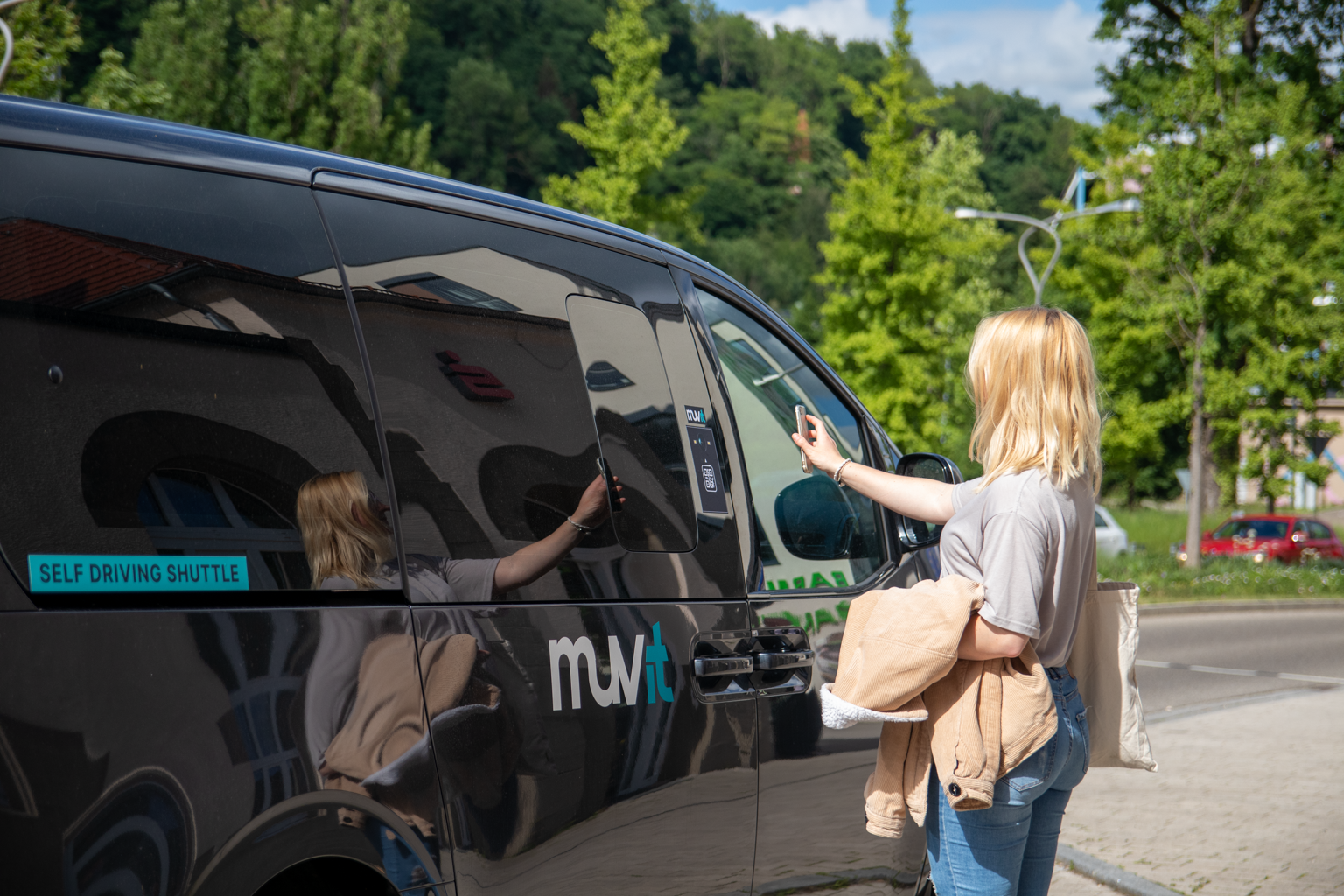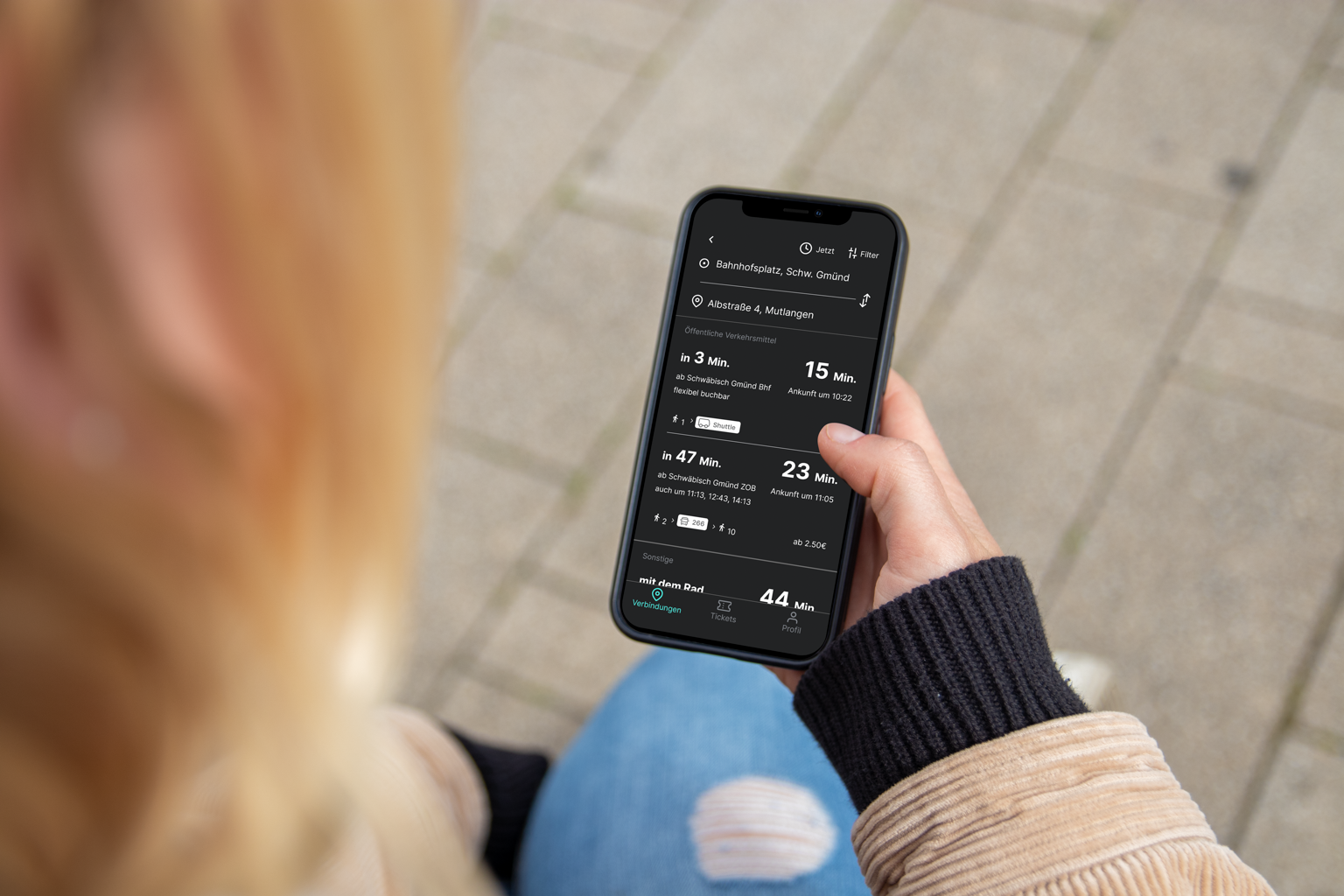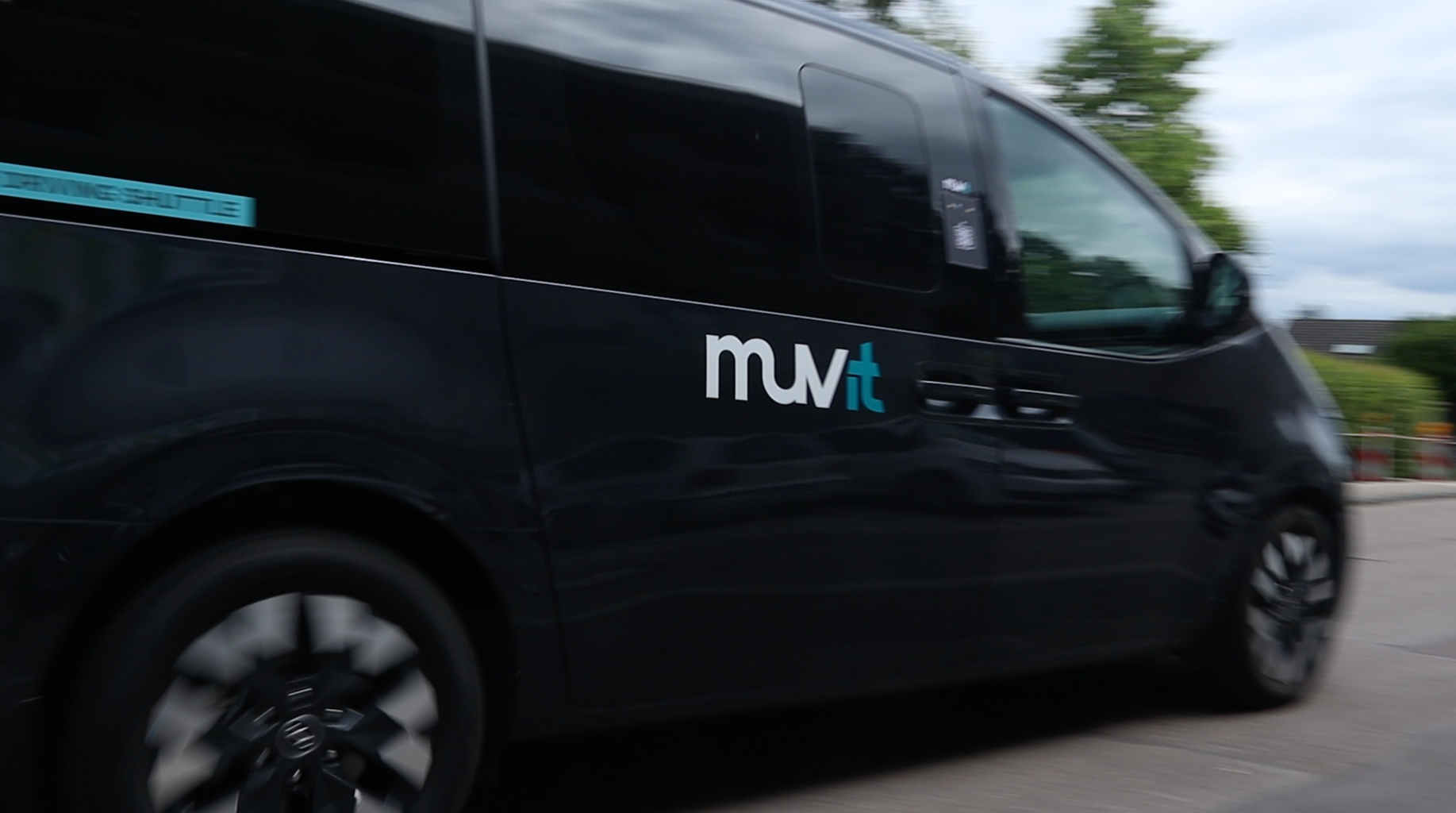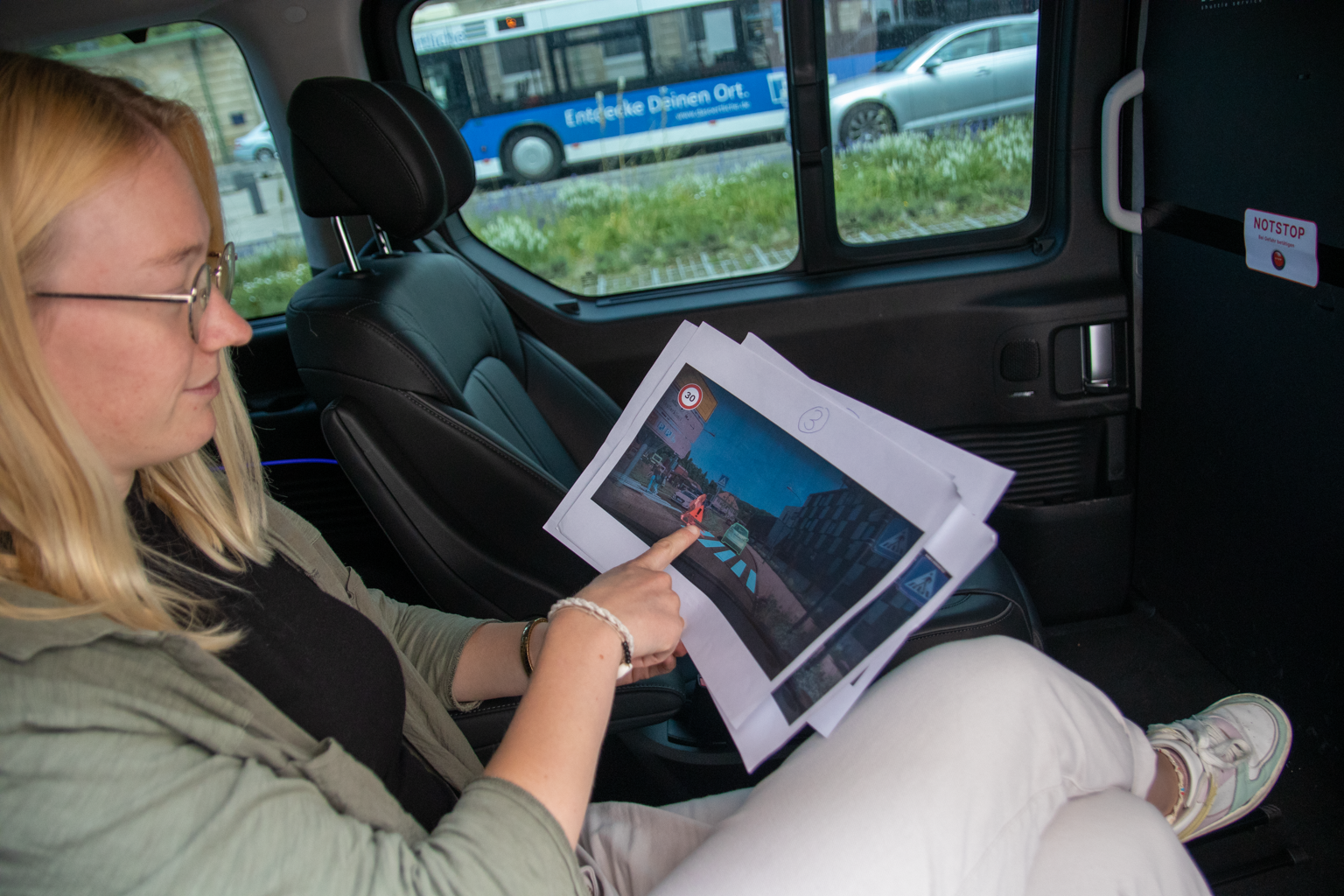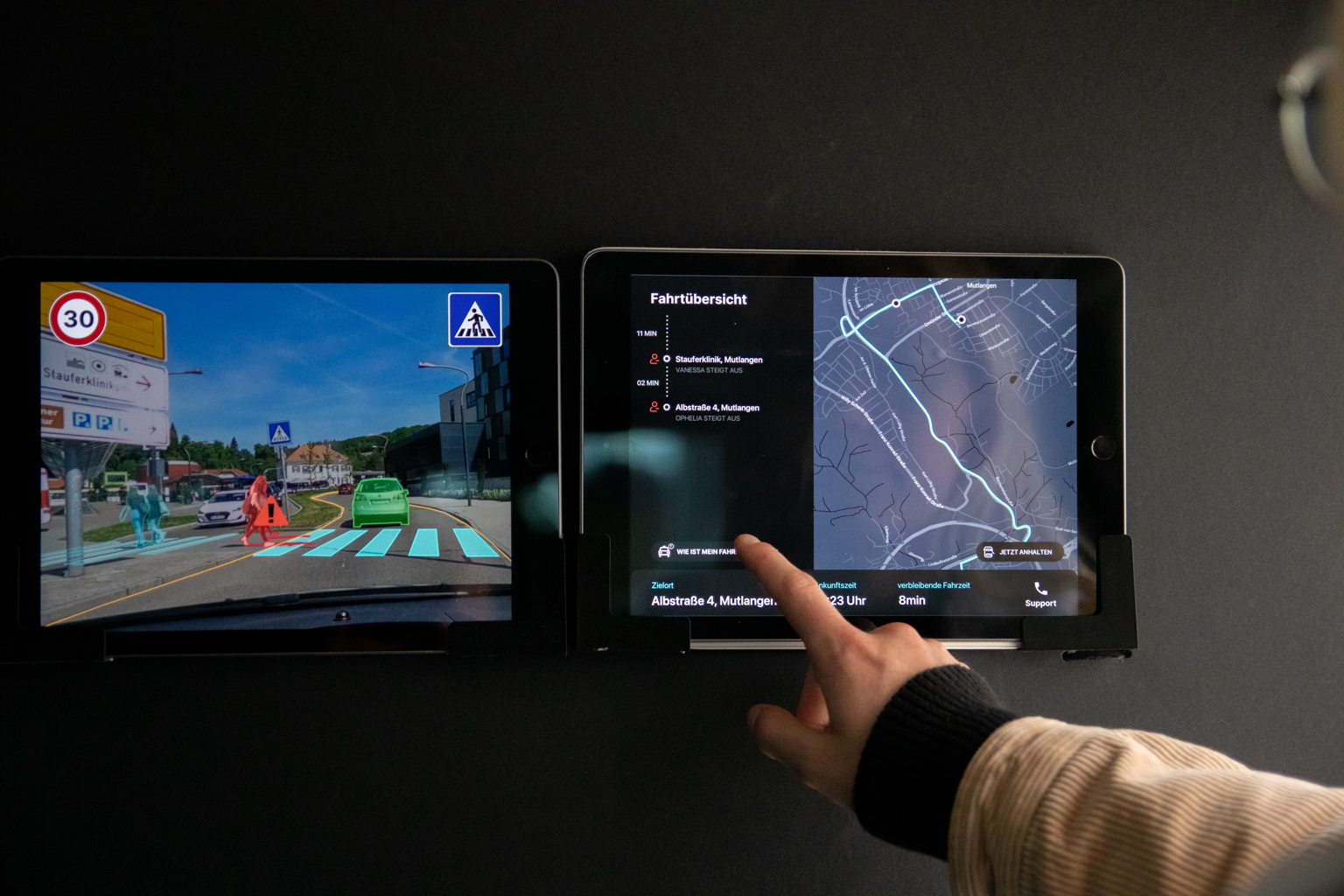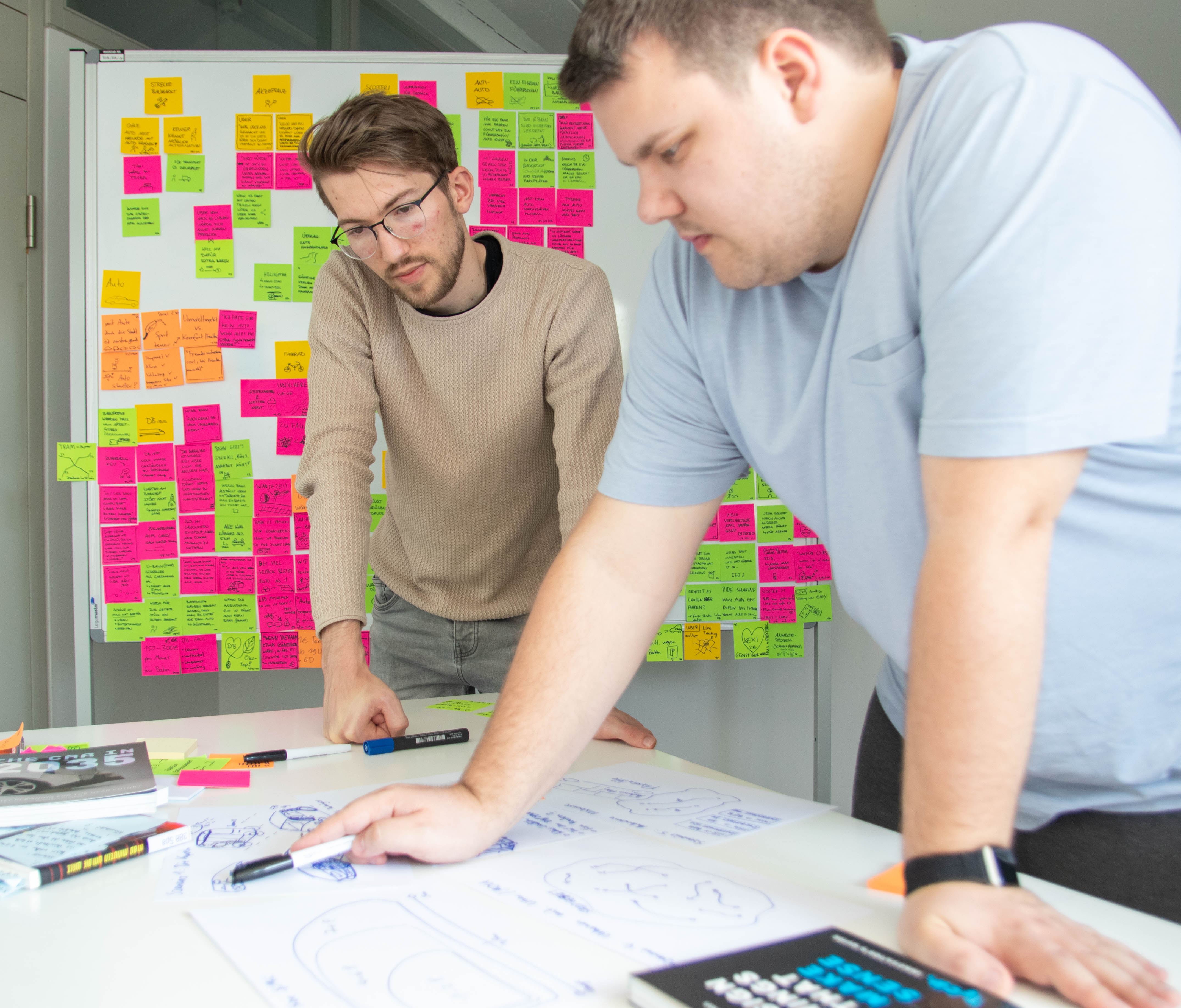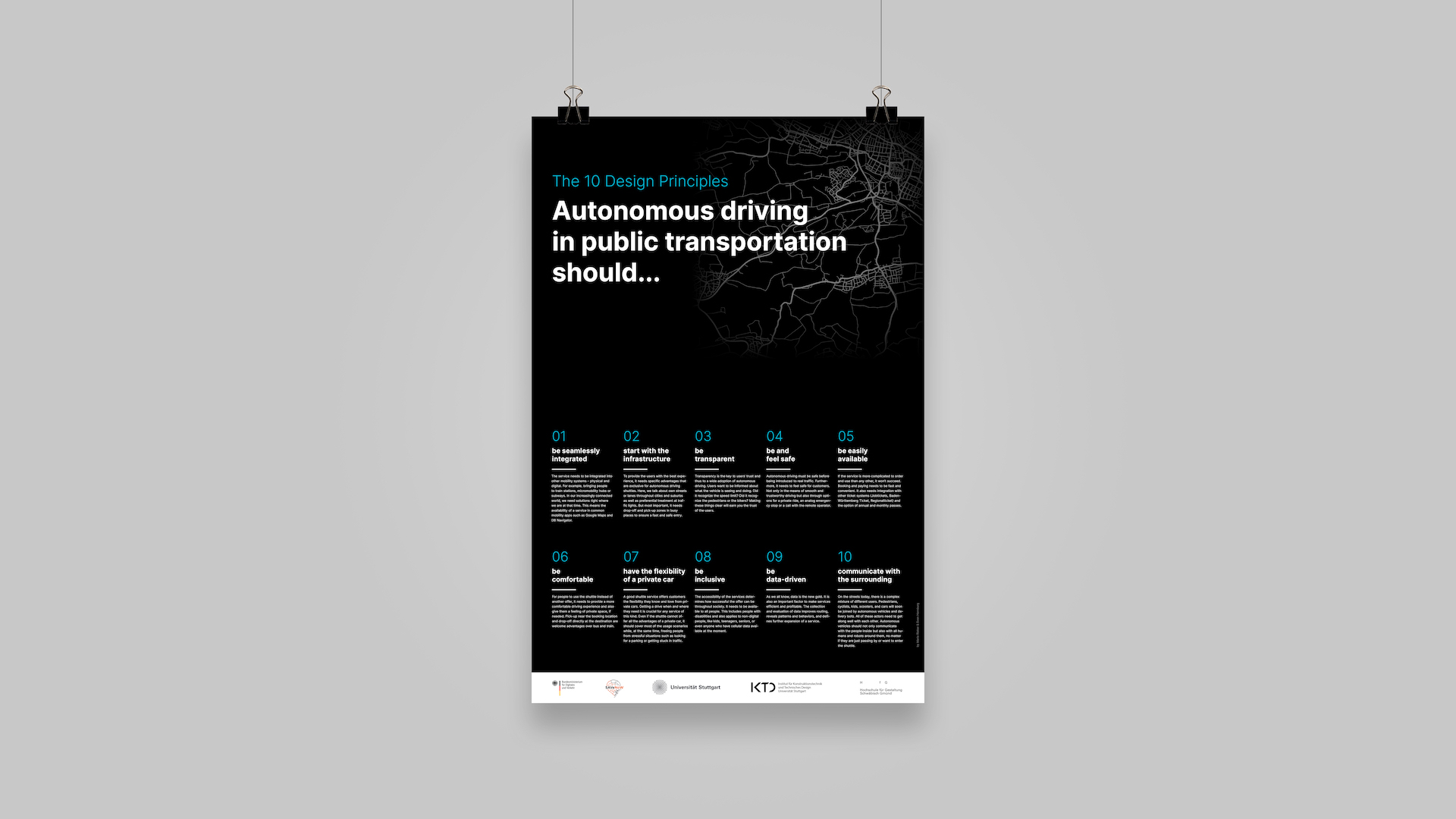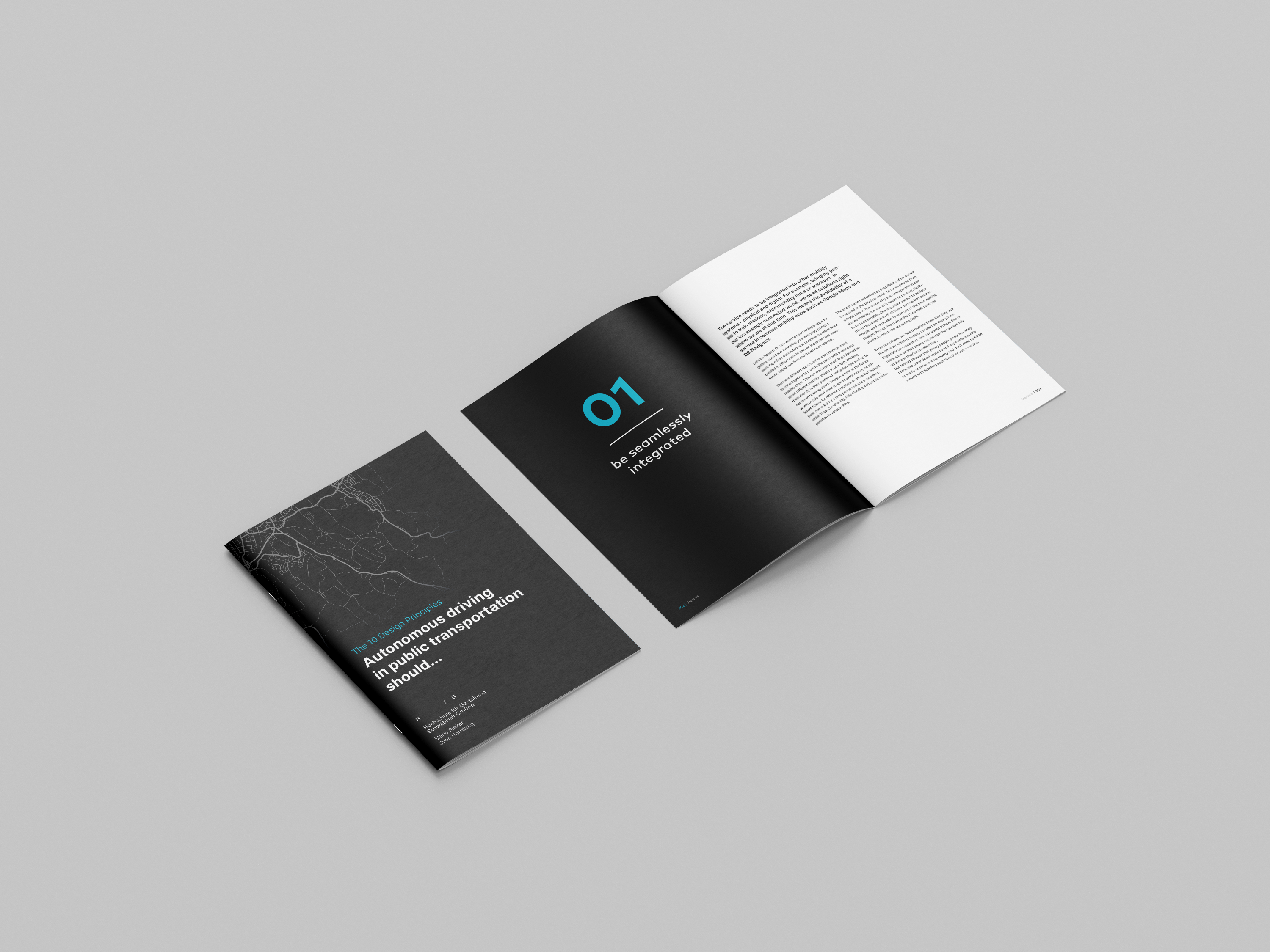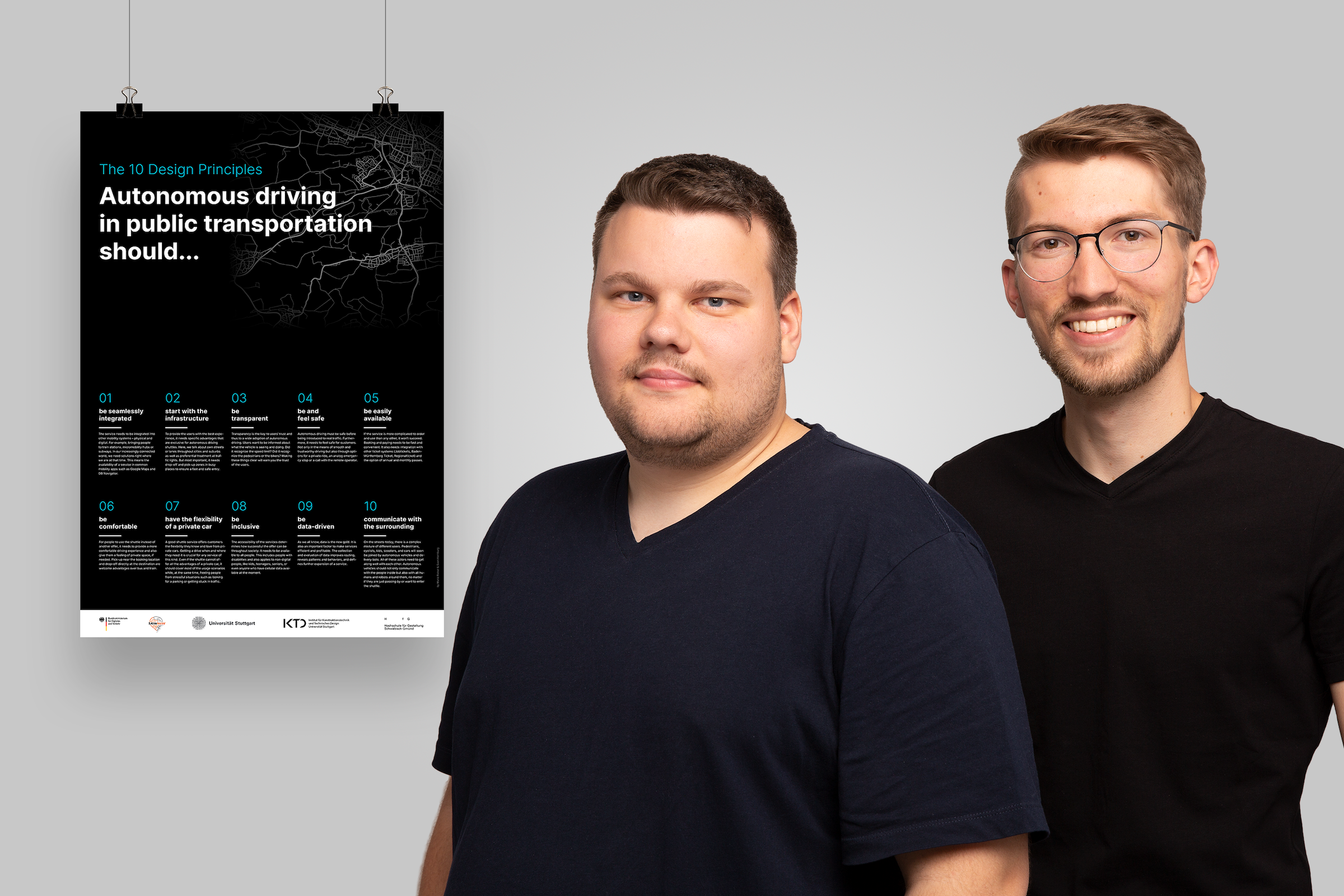Public transport in rural areas is very unpopular in large parts of Germany because it often lacks flexibility, comfort and satisfactory availability.
In order to strengthen public transport in rural areas, attractive alternatives to private cars are needed. One promising approach is demand-driven mobility services that are booked flexibly and used jointly.
On-demand ride pooling is one such service, in which passengers with similar destinations share a vehicle, thus reducing costs and environmental pollution.
However, to deploy this cost-effectively in many places, staff shortages and high operating costs must be overcome. Therefore, we have been working on the user-centered design of driverless shuttles in public transport.
To do this, we spoke with many different mobility users and experts in the fields of transportation, mobility services, and autonomous driving. We then iteratively tested our assumptions in several user tests and gained further insights. In the process, we designed and prototyped the fictitious shuttle service "muvit", which can be seen in the pictures.
We summarized our findings of the master thesis compactly in the form of ten design principles. With the help of these principles, research institutions, transport authorities and mobility providers can build on our recommendations and design corresponding services in a user-centered way.
With our principles, we want to contribute to the strengthening of public transport in rural and suburban areas of Germany, so that more people will do without their own cars in the future.
The work was developed in the BMVI-funded research project SAVeNoW in cooperation with the IKTD of the University of Stuttgart under the direction of Prof. Dr. -Ing. Wolfram Remlinger.
